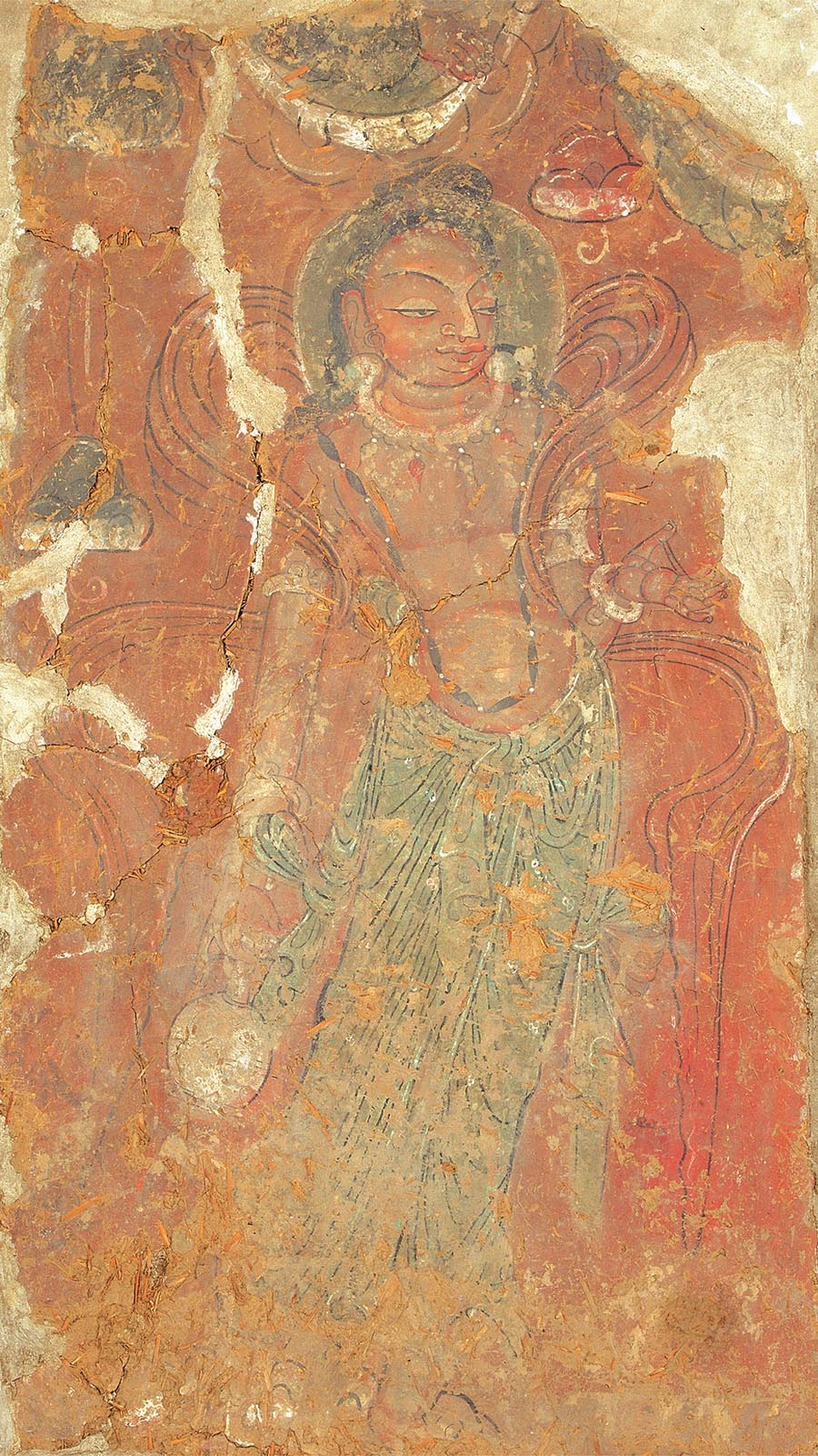Precious repositories of piety and prestige

A mural fragment dating to the Northern Liang kingdom (397-439) from the Tiantishan Grottoes in Gansu province. [Photo provided to China Daily]
Source of spirituality
The religion came in successive waves, each carrying diverse elements from India, where Buddhism was born, and the cultures it passed through.
"Hexi cave sites then are a remarkable compendium-and in fact some of the only historical materials we have-of all these various waves and the traces they left behind," says Schmid. "Styles became blended and localized. The aesthetics of cave sites increasingly oriented to the central plains during the Tang Dynasty (618-907)."
If time could really be turned back 1,600 years, people would probably find the Hexi Corridor was not a romantic art gallery as people may perceive it today. The land which has been wracked by continuous wars was enduring one of the darkest eras of northern China in ancient times, the Sixteen Kingdoms period (304-439). The population sharply declined, and one kingdom was soon conquered by another in this time of pandemonium.
Nonetheless, Juqu Mengxun, a nomadic leader who seized the throne of Northern Liang kingdom (397-439) in 401, seemed to find in Buddhism the cure to appease suffering. He is often credited with being the initiator of the first large-scale cave projects that grace the Hexi Corridor, according to documentation.
In Schmid's opinion, Juqu's motivation for sponsoring the cave building was multifold. Buddhism was a source of spirituality, moral guidance and merit, but it was also a source of magical and political power, and of course prestige.
By attracting famous monks, sponsoring the translation of scriptures, and building monasteries and cave temples, Juqu and his kingdom gained strategic authority and power, which the Sinologist notes, were much-needed given his kingdom's rivalries with nearby kingdoms.
Tiantishan Grottoes of Wuwei in the Hexi Corridor were widely speculated to be where Juqu's caves were, with findings in recent decades providing crucial clues.





 Print
Print Mail
Mail
